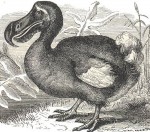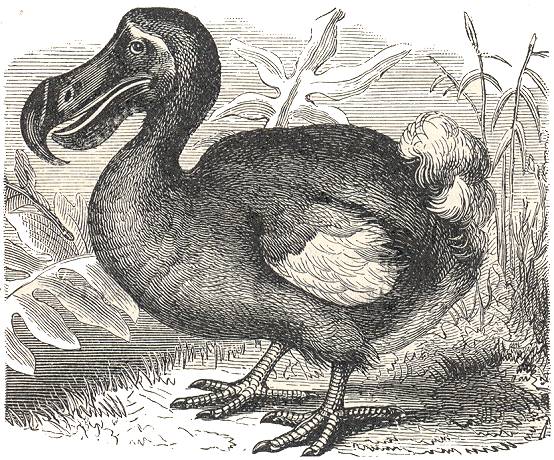 Across the globe animal species are going extinct. From such contributing factors such as disease, persecution, poaching, displacement, and habitat destruction, we are losing some of our most amazing creatures at an alarming rate. Unfortunately, species extinctions are nothing new. But can we learn from past mistakes to ensure more magnificent animals do not do the way of the dodo?
Across the globe animal species are going extinct. From such contributing factors such as disease, persecution, poaching, displacement, and habitat destruction, we are losing some of our most amazing creatures at an alarming rate. Unfortunately, species extinctions are nothing new. But can we learn from past mistakes to ensure more magnificent animals do not do the way of the dodo?
One of the most iconic species to have become extinct in the 20th Century was the thylacine or Tasmanian tiger. The last known thylacine was observed in captivity at the Hobart Zoo in 1936. Although the thylacine was a large nocturnal, carnivorous marsupial, it was no threat to humans. Like the Tasmanian devil, the main diet of the thylacine consisted of wallabies and kangaroos. However, due to human encroachment, the thylacine became tempted to steal chickens and sheep which ultimately was its death sentence. A bounty was placed on the thylacine encouraging the uncontrolled killing of all. By the time it was realized that thylacine numbers were decreasing too rapidly to sustain a population it was too late.
or Tasmanian tiger. The last known thylacine was observed in captivity at the Hobart Zoo in 1936. Although the thylacine was a large nocturnal, carnivorous marsupial, it was no threat to humans. Like the Tasmanian devil, the main diet of the thylacine consisted of wallabies and kangaroos. However, due to human encroachment, the thylacine became tempted to steal chickens and sheep which ultimately was its death sentence. A bounty was placed on the thylacine encouraging the uncontrolled killing of all. By the time it was realized that thylacine numbers were decreasing too rapidly to sustain a population it was too late.
 In 1966, Dr. Jay Savage first observed the Golden Toad of Costa Rica. Less than 20 years after its discovery, it was estimated that only 10 toads were left in the wild. By 1989, the Golden Toad was extinct. Globally, amphibian populations are being decimated by chytrid fungus infections. Chytrid is a nondiscriminatory killer that causes a thickening of the skin of infected individuals. Because amphibian respiration is unique in that it occurs through the skin, a thickening of the dermis causes death via suffocation. Although no Golden Toads were ever found with chytrid, it is assumed that the fungus was probably the most significant extinction factor for this species.
In 1966, Dr. Jay Savage first observed the Golden Toad of Costa Rica. Less than 20 years after its discovery, it was estimated that only 10 toads were left in the wild. By 1989, the Golden Toad was extinct. Globally, amphibian populations are being decimated by chytrid fungus infections. Chytrid is a nondiscriminatory killer that causes a thickening of the skin of infected individuals. Because amphibian respiration is unique in that it occurs through the skin, a thickening of the dermis causes death via suffocation. Although no Golden Toads were ever found with chytrid, it is assumed that the fungus was probably the most significant extinction factor for this species.
The last Vietnamese Javan Rhino was shot by poachers in 2010. Once found in a vast home range covering Vietnam, Cambodia, Laos, Thailand, and Malaysia, the Vietnamese Rhino was hunted to extinction by the demand for its horn. Although no real medicinal properties have ever been documented, rhino horn is highly sought after in Ancient Chinese Medicine as a cure all. All species of rhino are under threat as the black market value of rhino horn has hit an all time high of $30,000 US for a single horn.
range covering Vietnam, Cambodia, Laos, Thailand, and Malaysia, the Vietnamese Rhino was hunted to extinction by the demand for its horn. Although no real medicinal properties have ever been documented, rhino horn is highly sought after in Ancient Chinese Medicine as a cure all. All species of rhino are under threat as the black market value of rhino horn has hit an all time high of $30,000 US for a single horn.
This year, the International Union for Conservation of Nature and Natural Resources (IUCN) will sadly add more names to the extinct column on their Red List of Threatened Species. Identifying the threats to wildlife populations is no longer the problem; researchers understand the factors contributing to animal extinction. The bigger issue is how do we stop already declining populations and prevent future collapses from occurring. Can we make a conscious effort to learn from our mistakes to help other species survive? Or will some of the most magnificent creatures ever to walk the earth be forced to share space on the extinction list with the dodo?
